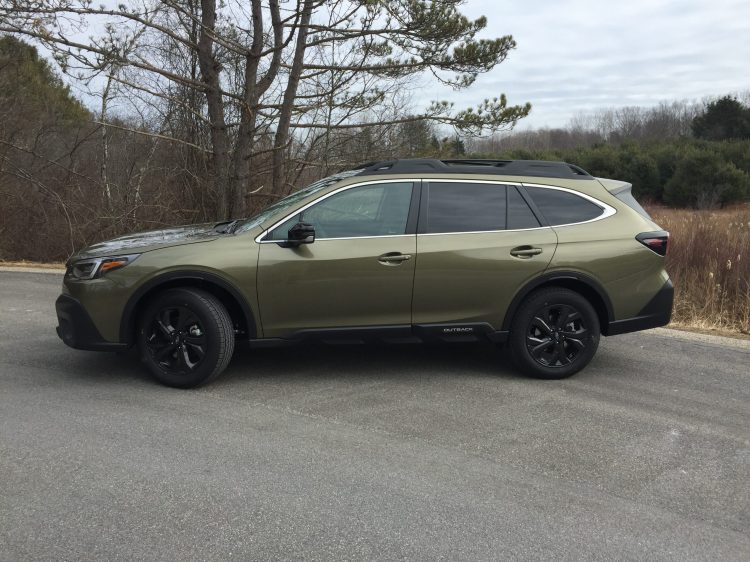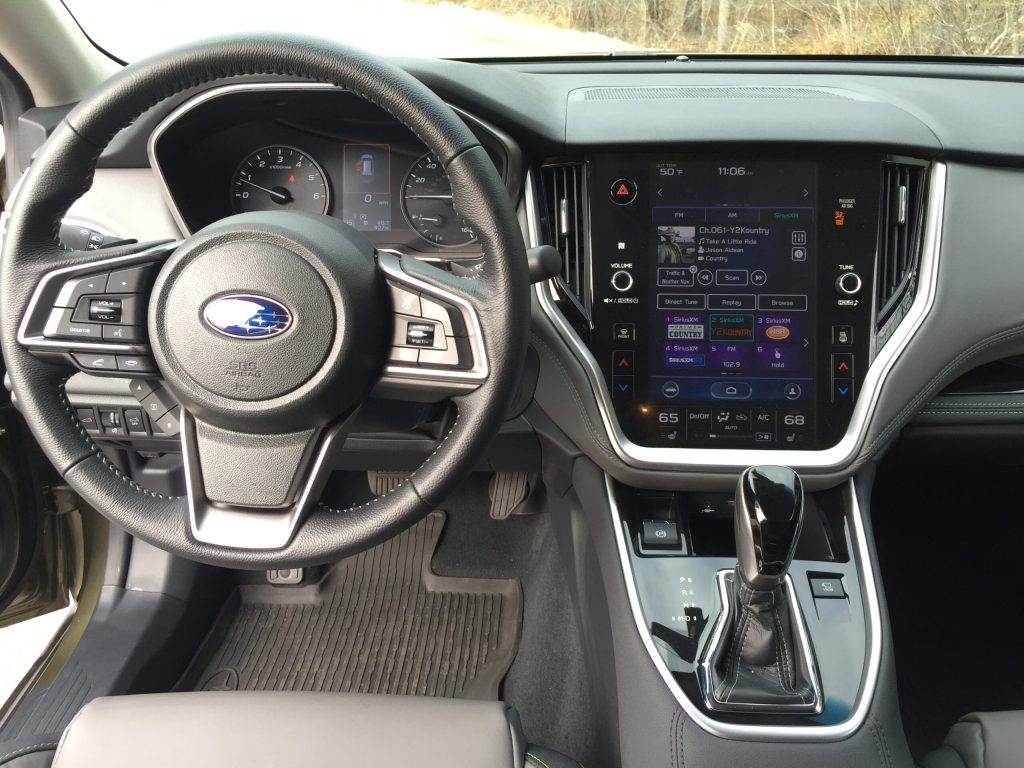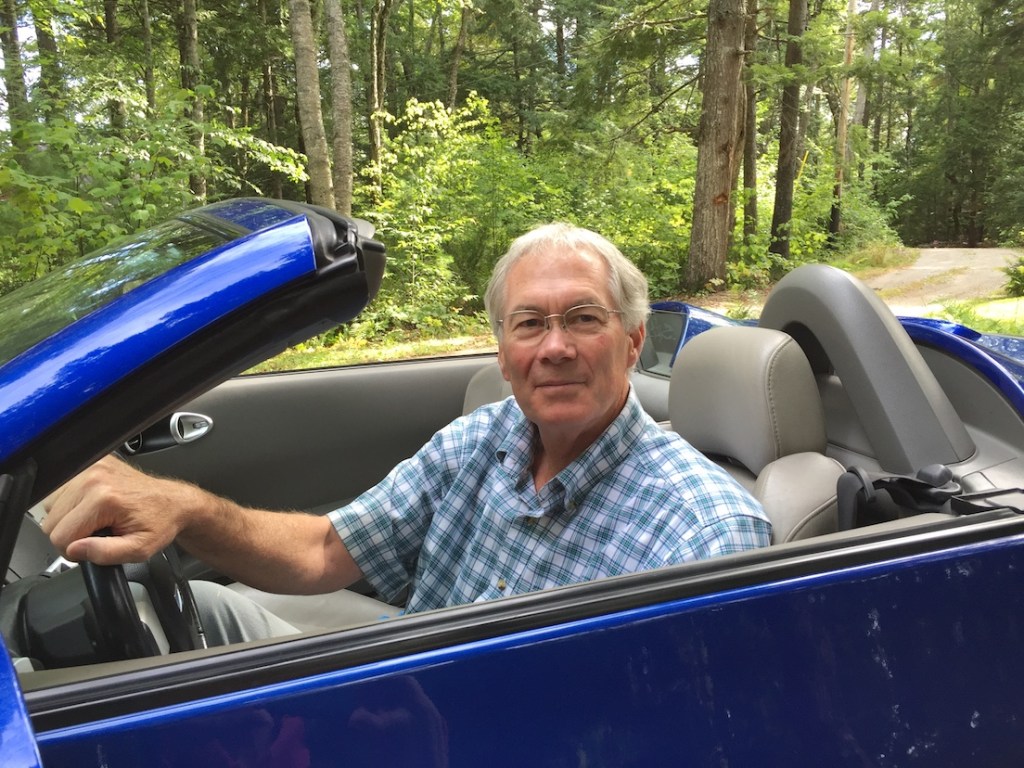Since 1996 the Outback has propelled Subaru’s sales in America—the brand’s largest market. Now in its sixth generation, and built in Lafayette, Indiana, the latest Outback remains the best-selling Subaru overall (barely edging the Forester last year) but with enough volume that as a stand-alone brand, the Outback would outsell the entire lineups from Acura, Cadillac, Infiniti, Lincoln, Volvo and numerous other brands. Can you hear Subaru dealers smiling?
The Outback’s elevated stance (8.7-inches of ground clearance) mean that it can actually go off-road, crawl over snowbanks, and otherwise execute the same driving chores as compact crossovers. Access is conveniently easy, visibility is excellent, and the full-time AWD provides seamless dry-road grip as well as foul-weather traction. Hold on to this thought.
There are many changes despite styling that looks almost the same. The former flat-six engine has been nixed—replaced by a 2.4-liter turbocharged boxer four-cylinder engine making 260-hp—a healthy 78-hp boost over the standard 2.5-liter boxer engine. Tow ratings climb to 3,500 with the turbo-motor—an 800-pound increase—yet fuel economy is three-mpg less with the larger motor, 23/30-mpg. The sticker price is a big leap too; base models start at $27,655, the Premium edition is $29,905, while the new Onyx XT sampled, $35,905 reflects several new features plus the turbo motor. The turbo motor includes some components optional on other trims.
Subaru’s EyeSight suite of electronic driving aids is now available across the board. Apple and Android compatibility are standard, as is a new 4G LTE Wi-Fi hotspot setup. Onyx trim gets you Star Tex water resistant fabric, which looks like leather, 10-way powered and heated driver’s seat, auto-up/down windows all around, torque-vectoring quick-ratio steering, dual X-mode traction management, CVT automatic, plus the new Starlink 11.6 Multimedia infotainment screen.
First, the Starlink screen closely mimics the giant, tablet-like touchscreens used by Ram pickups and Tesla—it is HUGE. Yet, it is nicely integrated into the dash, not added on top like in other vehicles, and the angle of the screen is more easily used by both driver and passenger. The icons are clear, concise and not crowded. The layers of menus is shallow. There are real audio knobs! There are actual preset buttons for favorite audio selections!
The console has, oh gosh, a real shifter with drive, reverse, neutral, and park. You can use it without looking at it! Incredibly, there is an actual, separate trip computer button that you don’t need to hunt through four-layers of screen menus to find under the heading “how to use car mats.” How novel, that basic works best.
Could some other automakers buy the Outback so they can study how simple controls work better?
Most car critics, okay some reviewers, actually enjoy driving. Cars with three pedals are awesome, turbocharged engines are better and new technology when useful is welcome. But tech for the sake of tech can be overtly distracting, as automakers seem to be caught between the wishes of the suppliers to feature everything they can fit into the cabin in a race against each other to brag about what their cars can do.
While occasionally fracturing a law, or two, while sampling the latest and greatest vehicles—all in an effort to exact the best science you understand—enthusiast drivers generally prefer to drive the car, rather than the car drive them.
This is point number two—Subaru’s EyeSight system has progressed enough to help earn the Outback the highest safety ratings available. Kudos. These safety electronics—including lane assist, forward Collison avoidance, plus rear braking assist, will certainly aid many operators and save lives. However, in every day driving, several aids were quite intrusive; the forward collision avoidance wanted to brake as I accelerated to pass slower traffic on rural two-lanes. The lane-keeping assist fought highway driving efforts in construction zones—each to the point that they became a nuisance and were deactivated. That and the stop-start function. After that, the Outback was a much more enjoyable driver!
In fact, after a week together, the Outback proved to be a very composed machine with direct steering, balanced handling and a superb ride that surpasses every recent luxury car visitor in compliance and comfort over the tortured two-track trail near home that the MDOT calls a road. There were positive comments in the logbook every day about the Outback’s ride.
The newest Outback is a roomy, comfortable, versatile ‘experience-seeker’ (Subaru’s take) wagon. I cannot think of a single reason to spend thousands more on any of the premium luxury wagons that are the Outback’s size. This car simply offers vastly more value.
Send questions/comments to the editors.





Comments are no longer available on this story